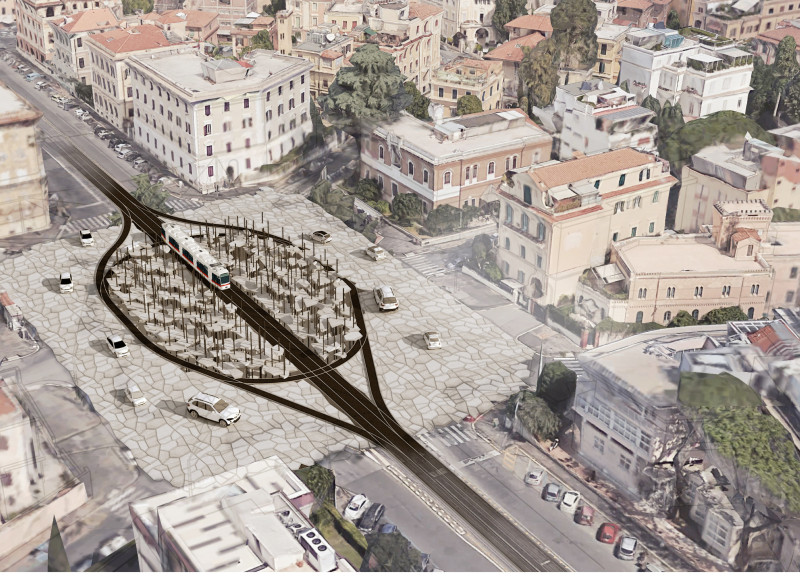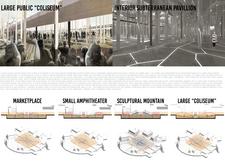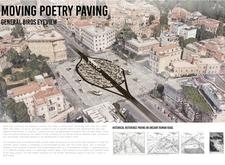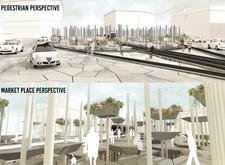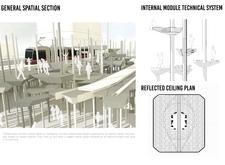5 key facts about this project
## Project Overview
The project is situated within a densely populated urban area, focusing on the development of interactive public spaces informed by historical Roman themes. It features several essential components, including a public coliseum, an interior subterranean pavilion, a marketplace, a small amphitheater, a sculptural mountain, and a unique paving system known as "Moving Poetry Paving." The intent is to create a framework that not only facilitates social interaction but also enhances accessibility and cultural engagement within the community.
## Spatial Configuration and User Engagement
The design emphasizes adaptability across its diverse components, allowing each to serve multiple functions. Modular prefabricated concrete units provide flexible configurations, accommodating a variety of activities ranging from markets to cultural events within the coliseum. Inspired by ancient Roman road systems, the layout promotes a fluid transition between pedestrian and vehicular pathways, reinforcing historical context while supporting modern urban needs. Elements such as the subterranean pavilion ensure connectivity to the surrounding infrastructure while enhancing user experience through dramatic uses of space and light.
## Material Selection and Sustainability
Sustainability is a priority reflected in the material choices, which include prefabricated concrete for durability and flexibility, alongside a metallic structure that supports the design. Natural elements like planters and green terraces are integrated throughout the development to mitigate the industrial aesthetic and support biodiversity. The "Moving Poetry Paving" further incorporates historical references, using organically laid stones in a manner that harmonizes with the existing urban landscape while facilitating pedestrian and vehicular movement. This approach not only respects historical context but also innovates urban functionality.


